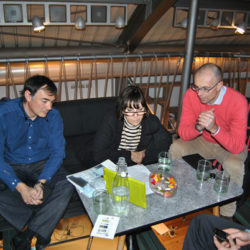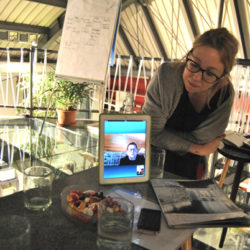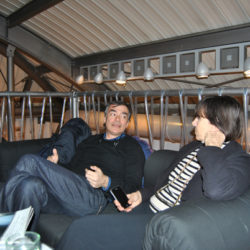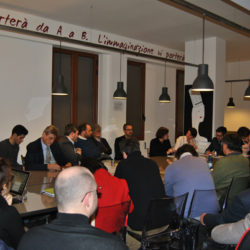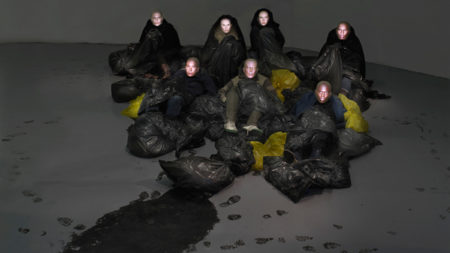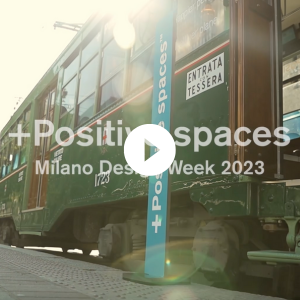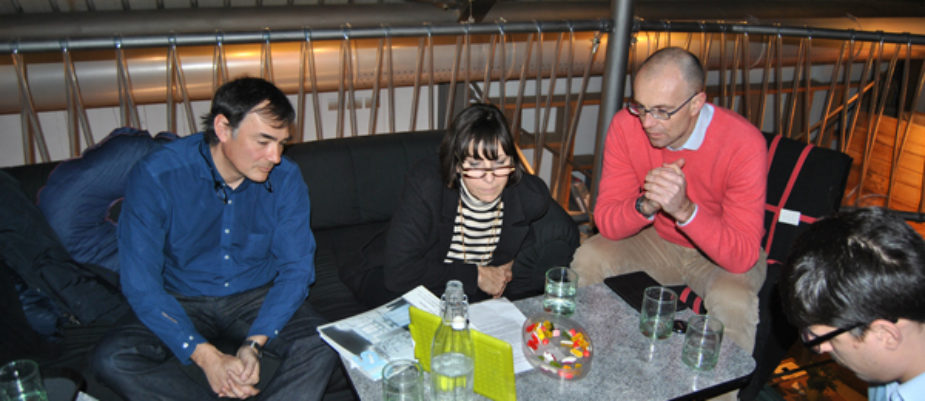
At The Hub Milano, the monthy fluid and nomadic meeting “New identities in the shared office”
The structure of the webmagazine WOW! is based on a nomadic, fluid and jelly editorial staff. Jelly is also the structure of the session that offer other subjects or stimuli.
The WOW! Jelly Session #3 was attended by:
Vita Sgardello (The Hub Milan), Raffaele Giaquinto (Piano C Milan), Aurelio Balestra (Toolbox Turin), Giulio Ceppi (architect TotalTool), Mario Mazzer, architect (via Skype from Conegliano) and Caterina Tiazzoldi, architect (via Skype from New York).
Websites and real estate agencies confirm that the availability of a single, rented room inside large-sized offices is increasing, not only in big cities; besides this “spontaneous” phenomenon of the shared office due to the economic crisis, does the concept of shared workplace carry more values? What are the benefits? Which is the best setting for the coworking?
Commitment is the identifying mark of The Hub; coworking space meant as network of people sharing their passions and working together to increase social, environmental and cultural impact. “That creates a very strong identity and community” Vita Sgardello says.
ToolBox ìs a different instance. “Our space is not marked by a philosophy, but the need of sharing, in order to activate synergies and entrepreneural spirit – Aurelio Balestra explains – and we also wanted to meet people’s requirement for more privacy”. Caterina Tiazzoldi via skype from New York explains the ground-breaking space design, that reconciles different privacy gradients. Meetings and initiatives are basic for the community. “There is a lot of space available around, so you have to put a soul, create a place where things happen”.
HOS in Brescia is a Business Center, although taking great care over cluster areas. “The ownership has singled out typologies of professionals working on sensitive data and needing privacy and rooms for meeting with customers – explains the designer Mario Mazzer via skype. No open space but only rooms defined by walls, yet very flexible.
Urban station is an intermediate typology “A Temporary Office in a trendy district in Buenos Aires – designer Giulio Ceppi explains – There is no community or a fundamental philosophy, users are occasional professional and creative people, it’s a fluid use, nobody has a fixed base or permanent activities”.
The last case study is Piano C; an organizational model, that fits the support to a professional growth (A) and the private area (B) in one service/space testing lines of business and solutions for an actual Worklife Balance (C). “The format is addressed to professional mother/women agreeing with the community values – Raffaele Giaquinto says- but we have a daddy, too. The distinctive features of Piano C are the Cobaby area and time flexibility: packets without ties and flexible working hours according to need”.
Any other new models of shared offices? The most challenging idea is the “Community” of the Homeless by the Glaser/Kunz artists, hyperrealist dummies, former managers now jobless and homeless, who still talk about Internet and trends of the Stock Exchange: an alarming shared office amid garbage bags…

